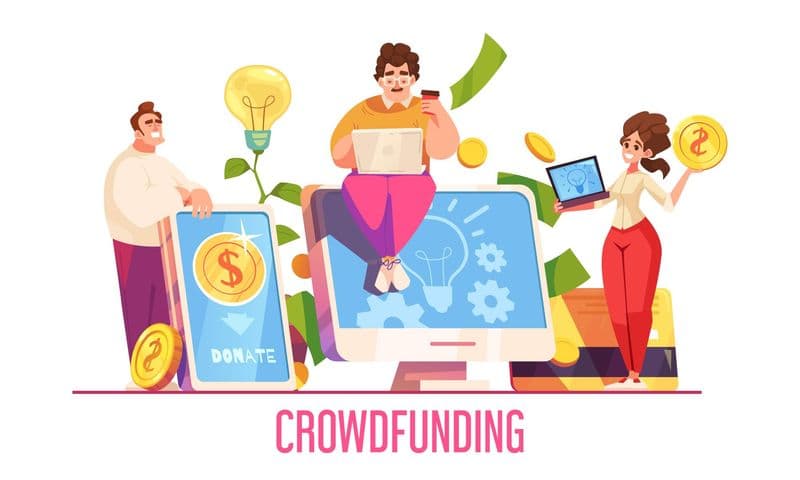In the fast-evolving digital landscape, artificial intelligence (AI) has become a game-changer for businesses. Among its many applications, AI-powered chatbots have emerged as indispensable tools in sales. By automating repetitive tasks, engaging prospects in real-time, and delivering personalized experiences, AI chatbots are transforming how businesses approach sales. This article delves into the role of AI chatbots for sales, their benefits, use cases, and best practices for implementation.
What is an AI Chatbot for Sales?

An AI chatbot for sales is a virtual assistant powered by artificial intelligence and natural language processing (NLP), often bringing conversations to life with a virtual talking avatar that enhances customer engagement., often bringing conversations to life with a virtual talking avatar that enhances customer engagement. These bots are designed to interact with potential customers, qualify leads, provide product recommendations, and even close deals—all while operating 24/7. Unlike traditional chatbots that rely on scripted responses, AI chatbots leverage machine learning to understand user intent and deliver dynamic, context-aware interactions.
Core Functions of an AI Sales Chatbot
- Lead Generation: Captures and qualifies leads by asking targeted questions.
- Customer Engagement: Provides instant answers to inquiries and guides users through the sales funnel.
- Personalized Recommendations: Suggests products or services based on user behavior and preferences.
- Follow-ups: Sends reminders, special offers, or updates to keep leads engaged.
- Transaction Assistance: Helps users complete purchases by addressing objections or offering incentives.
Benefits of Using AI Chatbots in Sales

AI chatbots offer numerous advantages that make them invaluable assets in modern sales strategies.
1. 24/7 Availability
Unlike human sales representatives who work specific hours, AI chatbots operate around the clock. This ensures that no lead goes unattended, even outside of business hours. According to studies, companies responding to leads within five minutes are 30 times more likely to convert them into customers.
2. Faster Response Times
AI chatbots can handle multiple queries simultaneously, providing instant responses that reduce customer wait times. This immediacy improves customer satisfaction and minimizes bounce rates.
3. Cost Efficiency
By automating routine tasks such as answering FAQs or qualifying leads, AI chatbots reduce the workload on human agents. This not only saves time but also cuts operational costs by up to 30%.
4. Enhanced Personalization
AI chatbots analyze customer data to deliver highly personalized interactions. For example, they can recommend products based on past purchases or browsing history1. McKinsey research shows that companies excelling in personalization drive 40% more revenue than their competitors.
5. Shortened Sales Cycles
By providing immediate answers and guiding prospects through their buying journey, AI chatbots expedite decision-making processes. This reduces the time from initial inquiry to purchase.
Use Cases of AI Chatbots in Sales

AI chatbots are versatile tools that can be applied across various industries. Here are some common use cases:
1. E-commerce
E-commerce businesses use AI chatbots to:
Guide customers through product catalogs
Recover abandoned carts by sending reminders or offering discounts
Handle return requests and shipping updates
For instance, an e-commerce chatbot might detect items left in a cart and offer a 10% discount code to encourage checkout.
2. Financial Services
Banks and insurance companies leverage chatbots to:
Compare loan options or insurance policies
Assist with account inquiries
Simplify loan applications
A chatbot could ask users about their income and spending habits before recommending the most suitable credit card.
3. B2B Sales
In B2B settings, AI chatbots:
Qualify leads by gathering information such as budget and decision-making authority
Schedule demos or consultations
Provide detailed product information
For example, Open Universities Australia used a chatbot to qualify prospective students, achieving a 250% ROI through automation.
4. Hospitality
Hotels and travel agencies use chatbots to:
Assist with booking inquiries
Provide personalized travel recommendations
Handle cancellations or rescheduling
Best Practices for Implementing an AI Chatbot for Sales

To maximize the effectiveness of an AI chatbot in sales, businesses should follow these best practices:
1. Define Clear Objectives
Before deploying a chatbot, identify its primary purpose. Whether it's lead generation, customer support, or upselling, having clear goals ensures better outcomes.
2. Personalize Interactions
Leverage customer data to tailor conversations. For example:
Use browsing history to recommend products
Address users by name for a more personal touch
3. Ensure Seamless Handoffs
Even the most advanced chatbots can't handle every scenario. Design escalation paths so that complex queries are seamlessly transferred to human agents without frustrating the customer.
4. Test Extensively Before Launch
Conduct thorough testing to identify bugs or gaps in workflows. Test edge cases such as incomplete inputs or slang terms to ensure robustness.
5. Be Transparent
Always inform users that they're interacting with a bot. Transparency builds trust and sets realistic expectations.
Challenges and Limitations of AI Chatbots
While AI chatbots offer numerous benefits, they aren't without limitations:
1. Lack of Emotional Intelligence
Chatbots can't replicate human empathy or build emotional connections with customers—a critical factor in high-touch sales scenarios.
2. Limited Scope
Chatbots excel at handling routine tasks but may struggle with complex negotiations or nuanced conversations.
3. Dependency on Data Quality
The effectiveness of an AI chatbot depends on the quality of data it is trained on. Poor data can lead to inaccurate responses.
Real-World Examples of Successful AI Chatbot Implementation
Example 1: David’s Bridal
David’s Bridal introduced "Zoey," an AI assistant that handled customer inquiries and processed dress orders via messaging platforms. Within weeks of deployment, Zoey generated $30,000 in automated sales while freeing up human agents for high-touch interactions.
Example 2: Virgin Media O2
Virgin Media O2 used conversational bots to initiate sales conversations and route them to the appropriate human agents when necessary. This approach added 10% incremental sales while reducing handling time by 13%.
Future Trends in AI Chatbots for Sales
The future of AI chatbots looks promising with advancements in technology:
Integration with generative AI for more natural conversations.
Enhanced predictive analytics for better lead scoring.
Greater adoption of voice bots alongside text-based chatbots.
Increased focus on ethical AI practices and transparency.
Conclusion
Integrating an AI chatbot into your sales strategy can revolutionize how your business engages with customers and drives revenue growth. By automating tedious tasks while delivering personalized experiences at scale, these intelligent assistants empower businesses to stay competitive in today's fast-paced market. With proper implementation and continuous optimization, an AI chatbot can become your strongest ally in achieving sales success!
FAQ
Q1: Can an AI chatbot replace human sales representatives?
A: No, AI chatbots complement human sales reps by automating repetitive tasks and handling initial interactions. Complex negotiations still require human expertise.
Q2: How much does it cost to implement an AI chatbot?
A: Costs vary depending on features and complexity but typically range from $5,000 for basic bots to $50,000+ for advanced solutions integrated with CRMs.
Q3: What industries benefit most from sales chatbots?
A: E-commerce, financial services, hospitality, healthcare, and B2B sectors benefit significantly from implementing sales chatbots.


